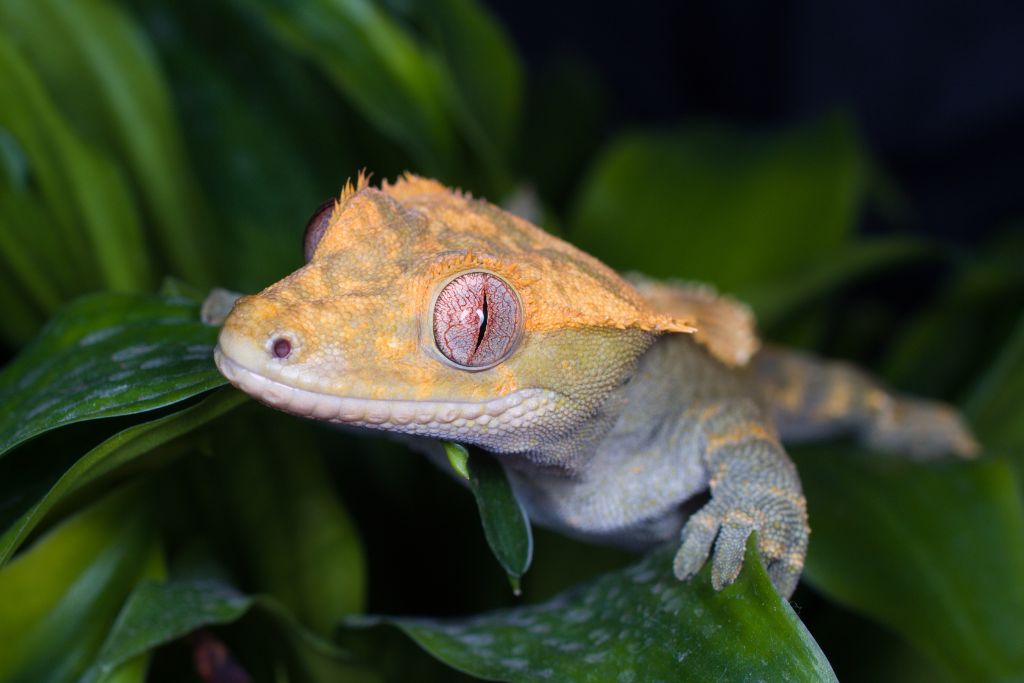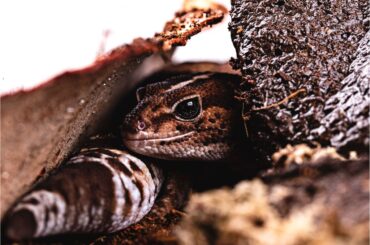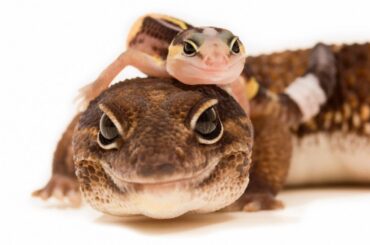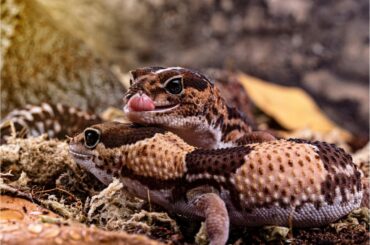Have you ever thought about why crested geckos need humidity so much? Are you sure you’re giving your pet gecko the right amount of humidity? What happens if the air level is too low for a crested gecko?
New Caledonian crested geckos do best in damp, tropical jungles. Humidity affects the health and happiness of animals that are kept as pets. The adorable creatures breathe through their skin, which helps them shed. They might have trouble shedding without humidity, leading to skin problems.
This guide has everything you need to know about crested gecko humidity. We’ll talk about the proper humidity levels, how to measure them, and how to make changes as required. You can also learn how to maintain your pet’s health and spot high or low humidity. This guide will teach you how to provide your crested gecko healthy, happy air.
What Humidity Should Crested Geckos be Kept at?
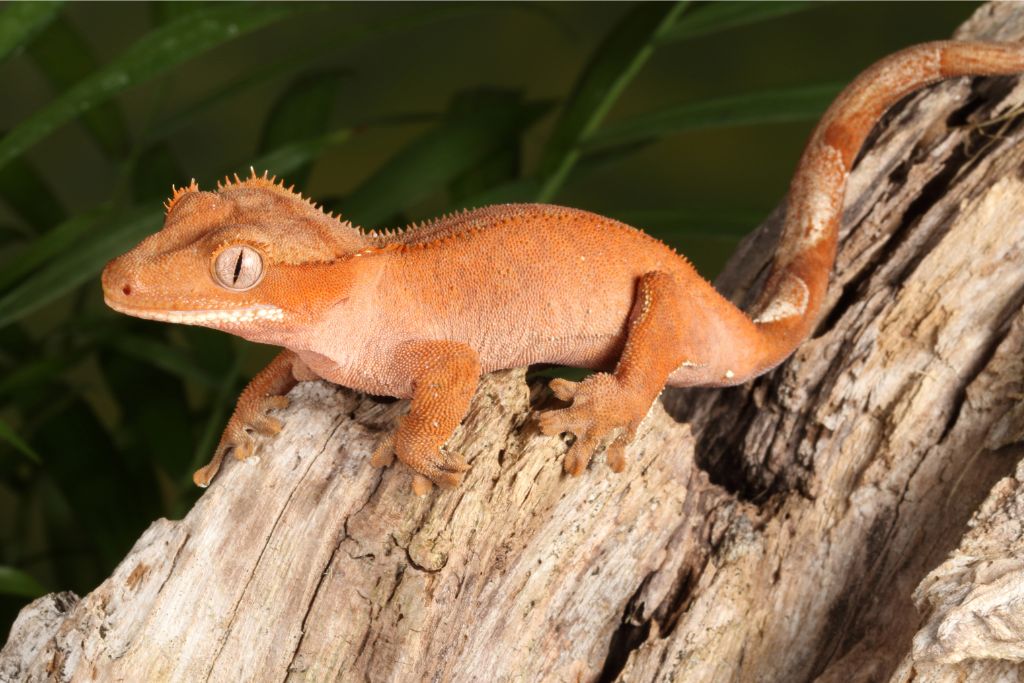
Crested Geckos prefer 50% to 70% humidity. This level is like their natural home in the tropical jungle. Humidity for crested geckos is significant for smooth skin shedding. Simple hygrometers measure how wet and muggy the air is. Keeping humidity in this range will help your crested gecko stay warm and avoid skin problems.
When your crested gecko sheds, raise the temperature to 70%. They can get rid of old skin faster when they are moist. Keep the humidity around 50% when they’re not shedding to make it feel like their normal environment. You can keep your crested gecko healthy and happy in its cage by changing the temperature levels.
The Significance of Humidity
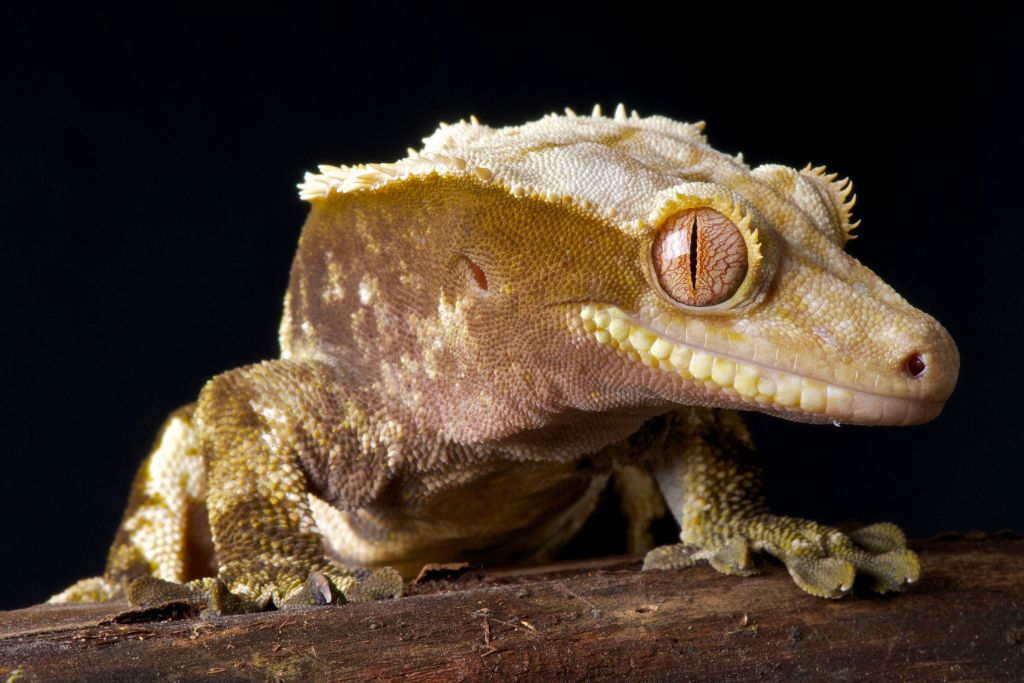
Crested geckos need humidity to stay healthy because of how their bodies work. The charming reptile’s skin stays moist because they breathe through it. They shed old skin to grow when their skin is moist. Low humidity can make it hard for geckos to shed, leading to skin problems and pain.
In the jungle, they get water from food and the moisture in the air. Keeping their area damp gives them the water they need to grow. Giving them the right amount of humidity is good for their health and happiness.
Consequences of Incorrect Humidity
Before we talk about what happens when crested geckos’ humidity levels are off, it’s important to know why keeping the humidity levels right is so important. Let’s talk about what could happen if you get the humidity levels wrong.
- Skin Issues: Not enough air can make it hard for geckos to shed, which can cause skin to stay on their bodies and cause skin problems.
- Dehydration: Crested geckos often get moisture from the air, so too little humidity can make them thirsty.
- Respiratory Problems: Too much humidity can dampen the air, which can cause dangerous bacteria to grow and cause your pet to have breathing problems.
- Stress and Discomfort: Your gecko may become stressed out when the humidity changes a lot, which can make them unhappy and hurt their health as a whole.
- Mold and Fungal Growth: Mold and fungi can grow in the cage if it doesn’t have enough airflow, which can be bad for your pet’s health.
Factors Influencing Humidity
Before considering humidity, consider how these factors affect the crested geckos’ surroundings. The primary factors are:
1. Temperature and Humidity Correlation
When temperatures are higher, humidity levels in the cage usually go down. To keep things in balance, it’s important to understand this connection.
2. Enclosure Size and Type
More work needs to be done to control humidity in bigger enclosures because smaller ones tend to trap moisture and make it higher. The type of enclosure—glass or screen—also affects how well it keeps humidity in.
3. Ventilation Considerations
There must be enough airflow to keep humidity levels from rising too high. Good airflow can help keep humidity levels at the right amount by letting moisture escape.
4. Live Plants and Water Features
Adding living plants and a shallow water dish to the enclosure can help raise the humidity level by letting plants naturally lose water and providing localized water sources.
What are the Ways to Lower or Increase Humidity in the Tank/Habitat?
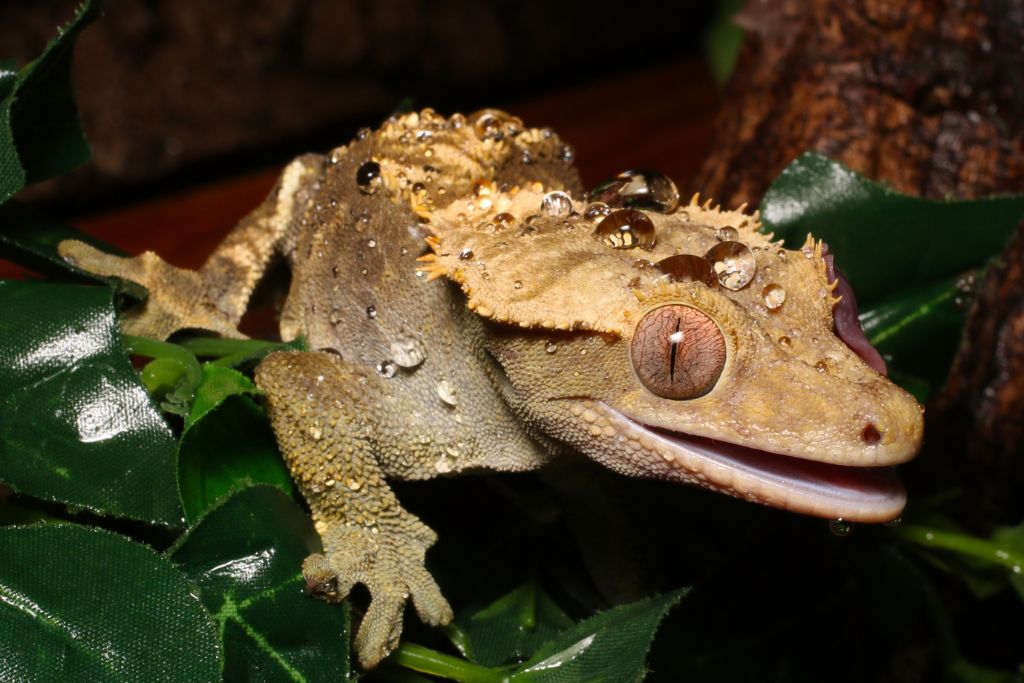
Keeping the humidity at a healthy level for your crested gecko is a prerequisite before discussing how to alter the humidity for your gecko. Then we’ll discuss how to adjust the humidity levels in their tank or habitat.
How to Lower the Humidity in the Tank or Habitat?
Before we explore how to reduce the humidity in your crested gecko’s surroundings, you should know when to do so. If your hygrometer consistently reads more than 70% humidity, take action. Here are some strategies for reducing humidity:
1. Improve Ventilation
Ensure there is enough airflow by adding more air holes or changing the enclosure’s vents. This lets the extra water leave and allows fresh air to flow through.
2. Reduce Mistings
Fewer misting sessions should be done daily, or each spray should last less time. Less regular misting will lower the humidity in the habitat.
3. Adjust Heating
Lower the temperature inside the cage by a little. Crested geckos like it a little cooler when the humidity needs to go down. Ensure that the temperature stays within the healthy range for your gecko.
How to Increase Humidity in a Tank?
It’s important to understand when it’s necessary to increase the humidity in your crested gecko’s tank. If your hygrometer regularly registers below 50%, you need to do something about it. The right way to make it humid:
1. Regular Misting
Mist the cage once or twice a day, depending on the humidity level and your gecko’s needs. Morning and nighttime spraying will keep the soil moist throughout the day.
2. Use Live Plants
Add living plants to the environment. A process called evaporation lets living things lose water, which naturally raises the humidity. To keep the humidity up, make sure the plants get enough water.
3. Shallow Water Dish
The cage needs a dish of water. This provides a drinking supply and a central location for your gecko to soak up moisture. The dish and its water should be spotless and fresh.
What are the Equipment/Items Used to Manage the Humidity of the Tank/Habitat?
Before considering humidity management solutions for your crested gecko’s tank, it’s crucial to have a firm grasp of how these instruments function. Pets’ health depends on controlled humidity levels. The following are some methods for regulating humidity:
Hygrometer
The humidity level in the tank can be measured with a hygrometer. A digital display typically shows the relative humidity.
How to use: Place the hygrometer inside the container and set it up to monitor the relative humidity. Check the reading frequently to make sure it stays within the proper parameters.
Misting Bottle
A spray nozzle on the top of a misting bottle lets you mist water into the cage.
How to use: You can mist the gecko’s tank once or twice daily, based on its needs and the humidity level. Fill the misting bottle with water and spray it through the enclosure.
Humidifier (for Large Enclosures)
A humidifier is a piece of electronic equipment used to increase the moisture content of the air.
How to use: Humidifiers should not be placed within the tank. Instead, point the misted air into the cage. Change the settings on the humidifier to get the humidity amount you want.
Common Mistakes to Avoid
Knowing how to care for your crested gecko before discussing humidity mistakes is crucial. Listed below are some common mistakes and suggestions for avoiding them:
1. Misting Too Much or Too Little
If you mist too much, the humidity will be too high; if you mist too little, it will be too low.
Solution: Check the humidity with a hygrometer and adjust the misting schedule accordingly. The ideal relative humidity is between 50 and 70 percent.
2. Ignoring Ventilation
If the cage doesn’t have enough airflow, moisture can get trapped inside and cause an increase of humidity.
Solution: To keep moisture from building up, make sure there is enough movement by adding more air holes or vents to the tank.
3. Using Incorrect Substrate
Low humidity can happen if you use a medium that doesn’t hold onto water.
Solution: To keep the humidity level high, choose a medium that holds water well, like coconut coir or sphagnum moss.
Conclusion
The appropriate temperature is crucial for your crested gecko’s well-being. It directly affects their skin’s health, its ability to shed, its ability to stay hydrated, and its general comfort. Maintaining 50% to 70% humidity keeps them healthy and feeling at home.
I recommend all readers follow this comprehensive guide’s advice. Providing a comfortable environment for your pet can increase its quality of life and perhaps extend its lifespan. Your crested gecko needs you to maintain a constant temperature and humidity in its enclosure.
FAQs
Do Crested Geckos Need High Humidity?
Yes, the humidity levels of crested geckos must be between 50 and 70%.
Do Crested Geckos Need a Lot of Ventilation?
Yes, crested geckos do need good airflow to keep their enclosure from getting too humid.
How Hot is Too Hot for Crested Geckos?
Crested geckos don’t do well in temperatures exceeding 85℉ (29℃), preferring instead a milder climate.

